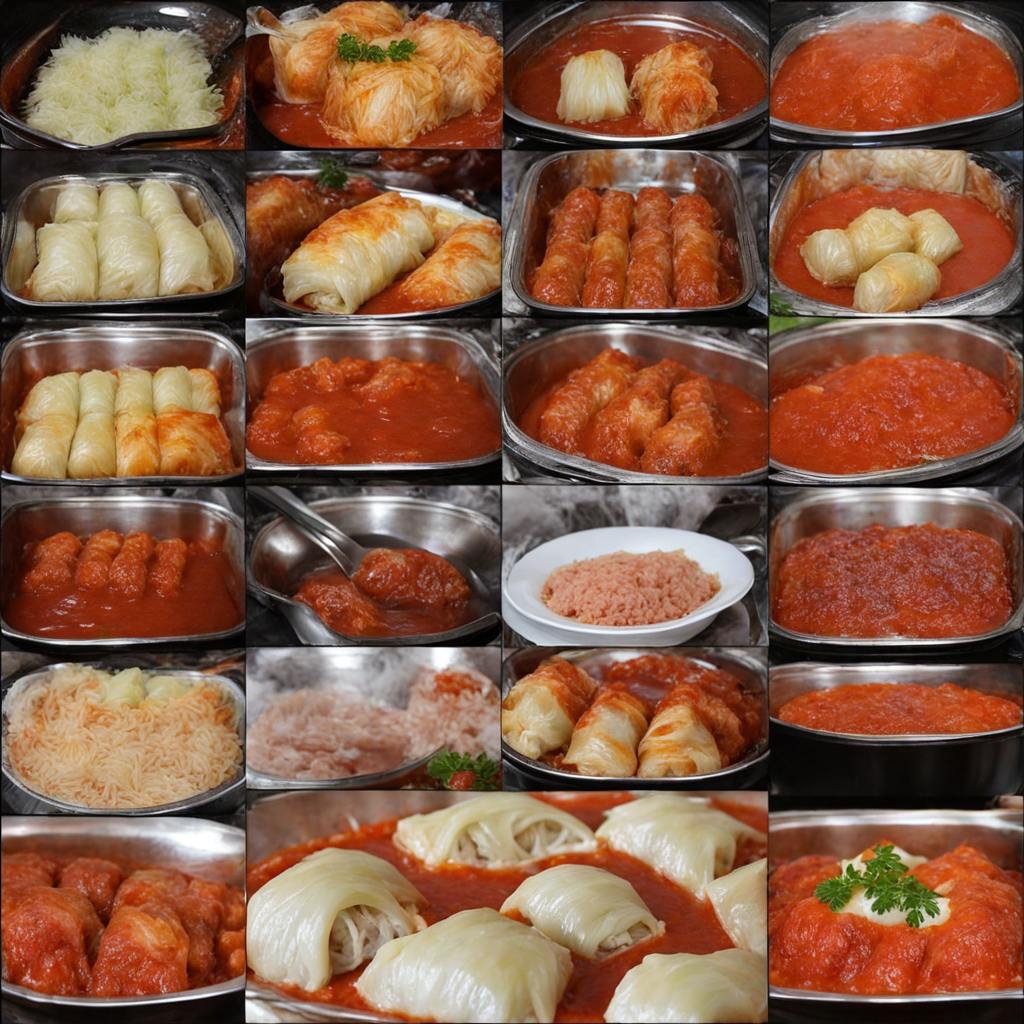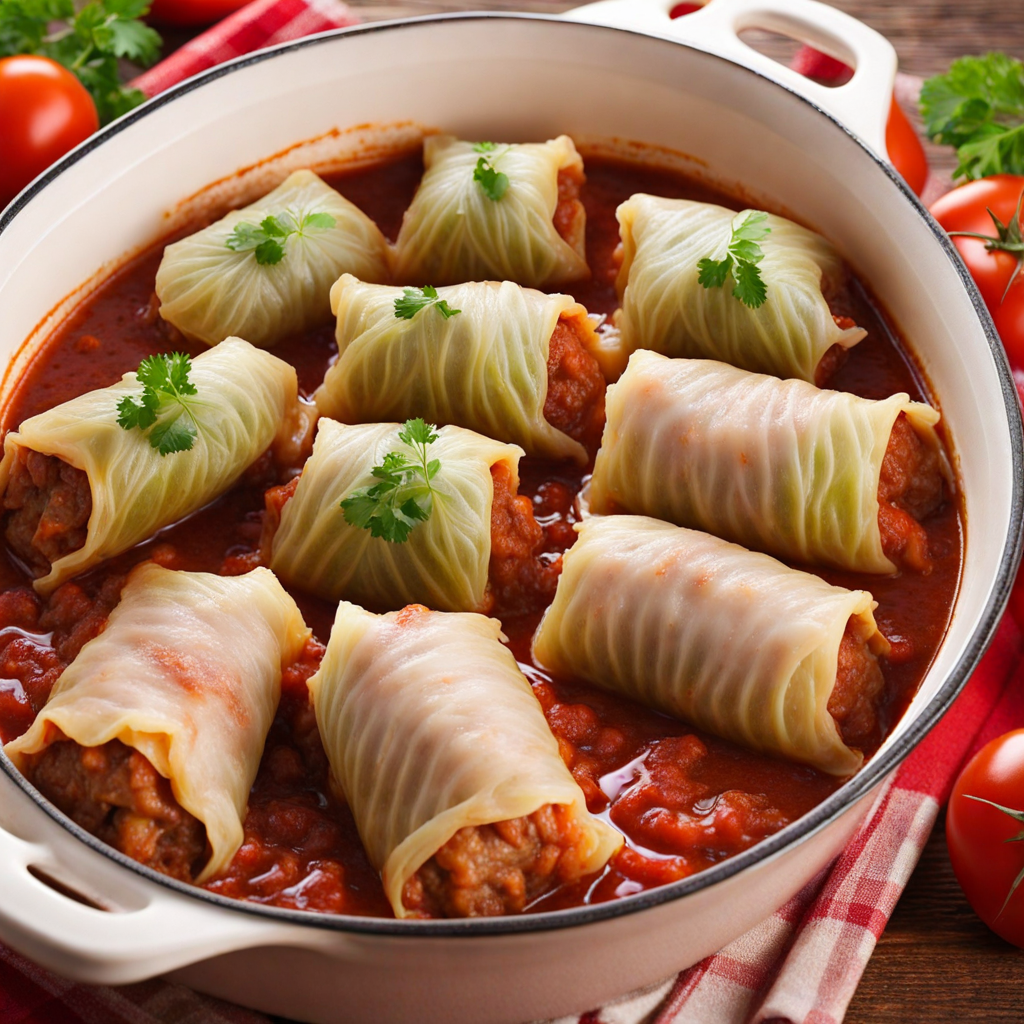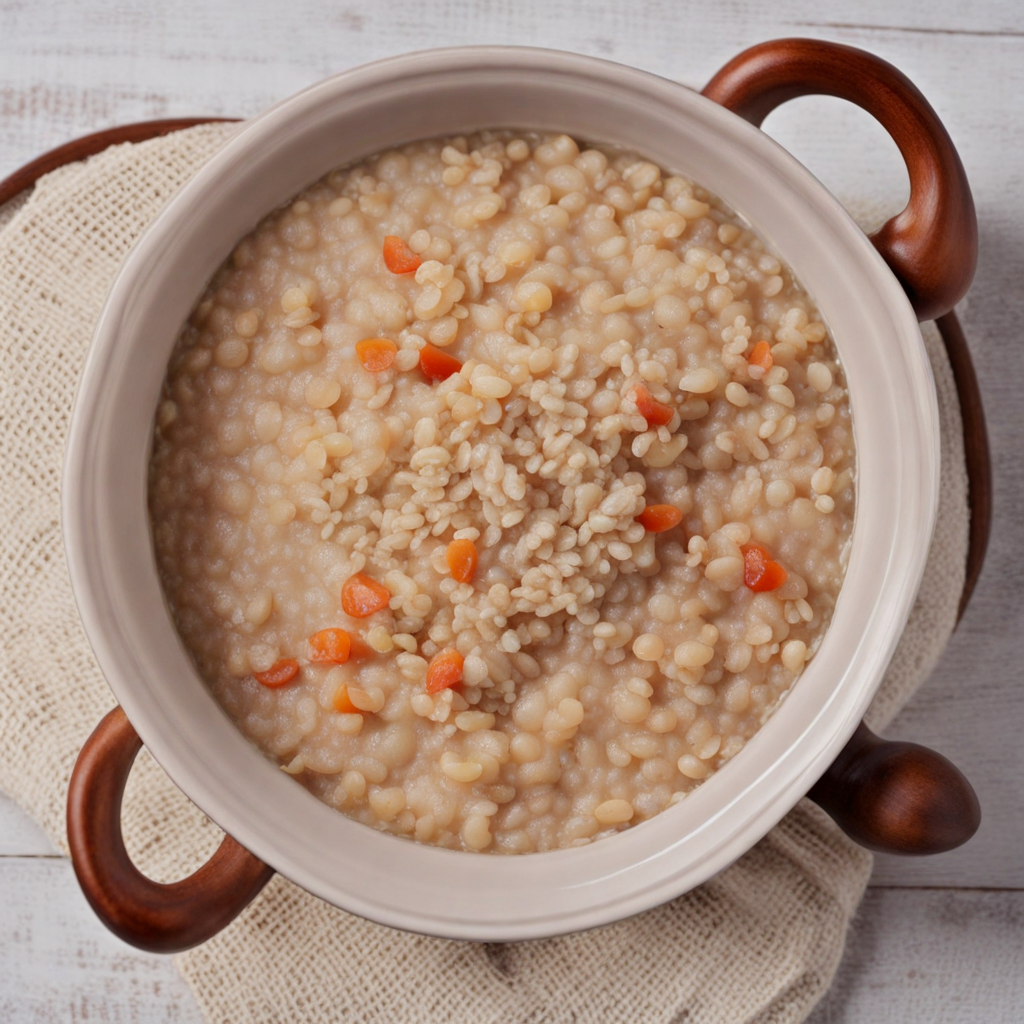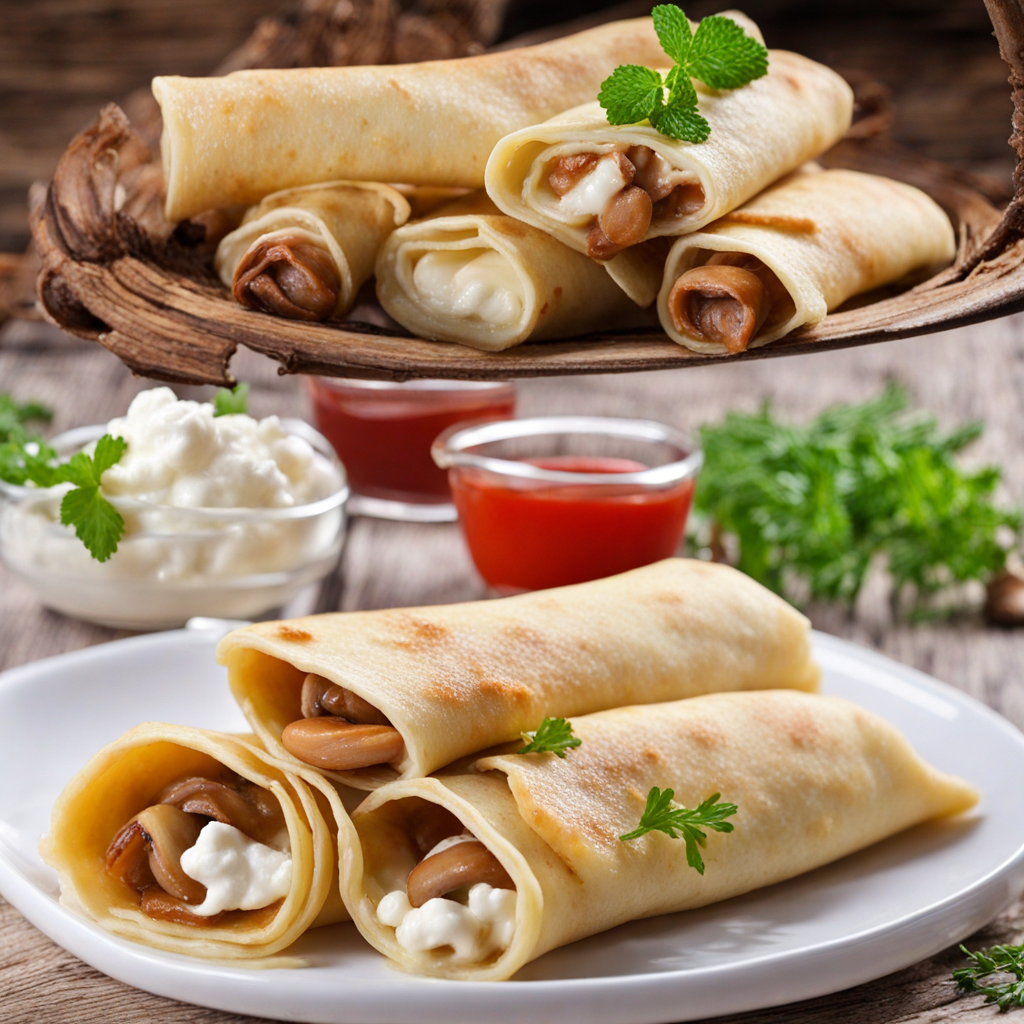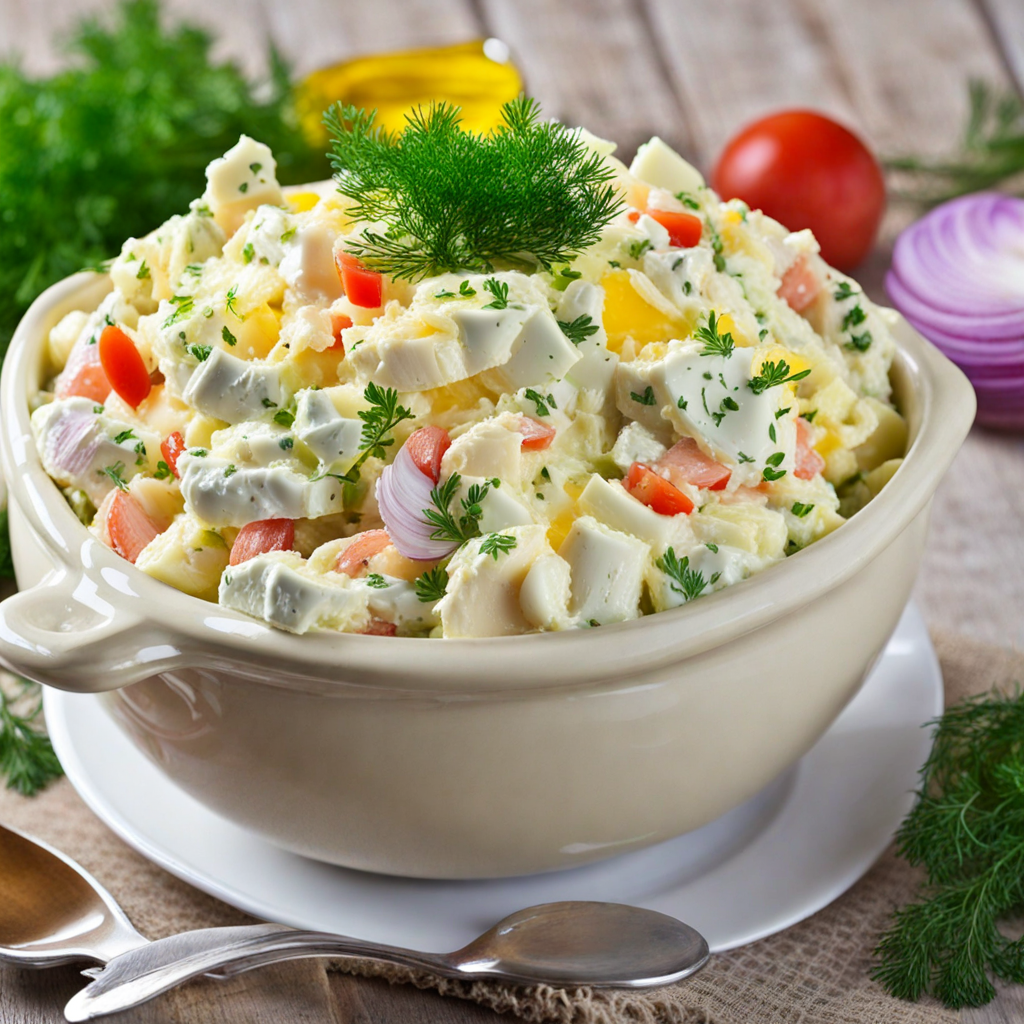Holubtsi
Holubtsi, often referred to as Ukrainian stuffed cabbage rolls, are a traditional dish that showcases the heartiness of Eastern European cuisine. These delightful rolls consist of tender cabbage leaves enveloping a savory filling, typically made from a mixture of ground meat—often pork or beef—combined with rice, onions, and an array of aromatic spices. The leaves are blanched to soften them, making it easy to roll up the filling, and then they are neatly arranged in a pot for cooking. The process is steeped in cultural significance, often enjoyed during family gatherings and festive occasions, embodying comfort food in every bite. Once rolled, Holubtsi are slowly simmered in a rich tomato-based sauce that infuses the dish with a depth of flavor. The sauce typically features tomatoes, bell peppers, and sometimes a hint of sour cream, which adds a creamy texture and a tangy finish. The slow cooking process allows the flavors to meld beautifully, resulting in a dish that is both comforting and satisfying. When served, the aroma is intoxicating, with the sweetness of the cooked cabbage harmonizing perfectly with the savory filling and the zesty sauce. Holubtsi are not only a delicious meal but also a symbol of Ukrainian hospitality and tradition. They are often accompanied by a dollop of sour cream on top, enhancing the richness of the dish. Each bite offers a delightful combination of textures and flavors—soft cabbage, hearty filling, and a tangy sauce that leaves you longing for more. Whether enjoyed at a family feast or cooked at home, Holubtsi are a wonderful way to experience the culinary heritage of Ukraine, inviting you to savor the warmth and richness of its flavors.
How It Became This Dish
The History of Голубці: Ukrainian Stuffed Cabbage Rolls #### Origins: A Culinary Tradition Голубці, pronounced "holubtsi," is a beloved dish in Ukrainian cuisine that consists of cabbage leaves stuffed with a savory filling, typically made of minced meat and rice or barley, and often accompanied by a rich tomato or sour cream sauce. The name "голубці" translates to "little doves," a nod to the shape of the rolled cabbage leaves, which resemble the wings of a dove. This dish has deep roots in Eastern European culinary traditions, with variations found in countries such as Poland (gołąbki), Russia (golubtsy), and Hungary (töltött káposzta). The origins of голубці can be traced back to the agricultural practices of ancient Slavic peoples who cultivated cabbage, a hardy vegetable that thrives in the temperate climates of Eastern Europe. Cabbage was a staple food due to its long shelf life, nutritional value, and versatility. The practice of stuffing cabbage leaves likely emerged as a means to preserve and enhance the flavors of the ingredients available, such as grains and meats. #### Cultural Significance In Ukraine, голубці is more than just a dish; it is a symbol of home and hospitality. Traditionally, it is prepared for special occasions, family gatherings, and celebrations, often served at weddings, Christmas, and Easter. The preparation of голубці can be a communal activity, bringing families together as they share the labor of rolling and cooking the stuffed cabbage. This aspect of communal cooking reflects the broader cultural significance of food in Ukrainian society, where meals are seen as opportunities to bond and celebrate together. Moreover, голубці holds a place in the national identity of Ukrainians. The dish embodies the resilience of the Ukrainian spirit, particularly during times of hardship. During the Holodomor, a man-made famine in the 1930s, families would rely on whatever ingredients they could find to make голубці, adapting the fillings based on available resources. This adaptability has become a hallmark of Ukrainian cuisine, showcasing the ability to create something nourishing and delicious from limited means. #### Development Over Time The evolution of голубці reflects the broader historical changes in Ukraine and Eastern Europe. The dish has absorbed influences from various cultures, resulting in a rich tapestry of regional variations. For instance, in western Ukraine, you might find голубці made with buckwheat instead of rice, while in eastern regions, they may be more heavily spiced, reflecting the culinary influences from neighboring countries. During the 19th century, as Ukrainian peasants migrated across Europe, they brought their culinary traditions with them. Ukrainian immigrants to North America, for example, adapted голубці to suit their new environment, often using readily available ingredients like ground beef and tomato sauce. This adaptation not only preserved the dish but also introduced it to a wider audience, making голубці a staple in Ukrainian-American households. The post-Soviet era also saw a resurgence of interest in traditional Ukrainian foods, including голубці. In the 1990s, as Ukraine regained its independence, there was a cultural revival that sought to reclaim and celebrate national identity. This resurgence included a renewed appreciation for traditional dishes, with many families returning to their grandparents' recipes and experimenting with modern twists. Today, голубці can be found in various forms across Ukrainian restaurants worldwide. Chefs often put their unique spin on the dish, incorporating gourmet ingredients, vegan options, and modern cooking techniques while still honoring the traditional essence. The dish remains a staple in Ukrainian homes, where the family recipe is cherished and passed down through generations. #### Ingredients and Preparation The basic preparation of голубці involves blanching cabbage leaves to soften them, making them pliable for rolling. The filling typically consists of a mixture of ground meat (such as pork, beef, or chicken), rice or barley, onions, and a blend of spices. Some families may add herbs like dill or parsley, while others might incorporate mushrooms or vegetables to enhance the filling's flavor. Once the leaves are filled and rolled, the голубці are arranged in a pot, sometimes layered with sauerkraut or additional cabbage leaves, and cooked slowly in a tomato sauce or broth. This slow cooking process allows the flavors to meld beautifully, resulting in a comforting and satisfying dish. #### Modern Interpretations and Global Reach As globalization increases the exchange of culinary traditions, голубці has found its way into the menus of diverse restaurants around the world. Chefs are experimenting with different fillings, such as quinoa, lentils, or even seafood, catering to dietary restrictions and preferences while still honoring the essence of the dish. Fusion variations can be seen in places like Los Angeles, where Asian influences might result in a spicy kimchi filling or in Toronto, where you can find a version topped with a jerk sauce. In recent years, the popularity of Ukrainian cuisine has surged, particularly among food enthusiasts interested in exploring authentic, hearty dishes. Cooking classes focusing on traditional Ukrainian food often feature голубці, allowing participants to learn about the cultural significance and historical roots of the dish while also gaining practical cooking skills. #### Conclusion Голубці is a testament to the rich culinary heritage of Ukraine, reflecting the adaptability and resilience of its people. From its origins as a practical way to use available ingredients to its role as a symbol of hospitality and family, голубці has evolved over time while remaining a cherished dish. Whether enjoyed in a family kitchen in Ukraine or a modern restaurant in the United States, голубці continues to bring people together, bridging cultural divides and celebrating the universal joy of sharing a meal. As the world continues to embrace the diverse flavors of global cuisines, голубці stands as a delicious reminder of the deep-rooted traditions that shape our culinary landscape.
You may like
Discover local flavors from Ukraine


